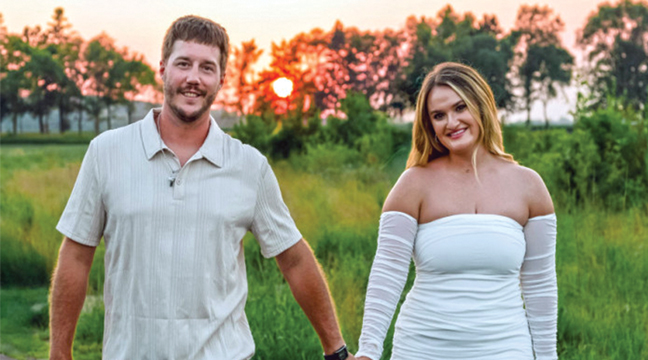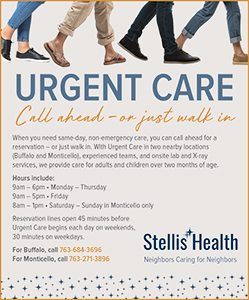Veterans who need medical care will no longer be subject to long waiting lines because of a new program being implemented this year. Aug. 7, 2014, President Obama signed into law the Veterans Access, Choice and Accountability Act (VACAA), which allows eligible veterans to use healthcare providers outside the VA health system to get health services.
“There was a backlog of veterans who were not able to be seen in a timely manner because of a backlog,” says Sherburne County Veterans Service Officer Eugene Graff. “The VA has come out with a Veterans Choice Card, which can be used for treatment outside the VA system under specific circumstances.”
If a veteran has been told by their local VA that they will have to wait more than 30 days for care, or if they live more than 40 miles from the closest VA healthcare facility, they may be eligible to get treatment at an outside facility.
“They have to go through the VA Medical Center to get authorization, but they will allow them to go to an outside provider to get their care,” says Graff.
Graff says a week ago a veteran came to his office who needed some specialty care.
“I called up St. Cloud (VA) and they authorized it over the phone just like that. It was unbelievable,” he said. “He needed special care and they were going to get somebody to help the veteran establish a provider. They were bending over backwards to help him.”
Before VACAA, veterans could sometimes use an outside provider in special instances where the VA didn’t have specialty personnel or weren’t able to run special tests, says Graff.
But that didn’t help the thousands of veterans who experienced delays over the past two years.
The delays in Minnesota began after the Dept. of Veterans Affairs decided to send claims from across the country to the St. Paul regional office in an attempt to reduce a backlog that reached almost 900,000 in March, 2013. The St. Paul office was one of the most efficient in the country, processing claims at a higher rate than most other offices. Some veterans in other parts of the county were waiting almost two years for their claims to be processed.
That increased the average time for a fairly simple claim in Minnesota from four months to 8-10 months.
Although legislation was passed in August, the program is just in its beginning stages.
“This was one of those programs where they had the cart in front of the horse,” says Graff. “They came out with the program but I think they weren’t sure how they were going to operate it or fund it. Now they’ve got all their ducks in a row.”
Legislation that enabled VACAA also included a $10 billion fund to pay for non-VA care furnished as part of the Choice Program.
The Choice Card is being issued in three phases. The first group was sent out by Nov. 5 to veterans who may live more than 40 miles from a VA facility, along with a letter explaining the eligibility requirements.
The next group of cards and letters will be sent by Nov. 17 to those veterans who are currently waiting for an appointment longer than 30 days from their preferred date or the date determined to be medically necessary by their physician.
The final group of cards and letters will be sent between December and January to the remainder of veterans enrolled in VA healthcare who may be eligible for the Choice Program in the future.
Any veterans who are not registered in the VA healthcare system can contact the Veterans Service Office to apply.
Graff wants to remind all veterans that even after they receive their Choice Card, they must still get authorization to use an outside provider.
“I know how some veterans are. They’re going to go to a local clinic and say “bill the VA,” he says. “But it doesn’t work that way. They can’t just go run to a doctor. They need to get authorization first.”
A phone number will be included with the card to help veterans verify their eligibility.










